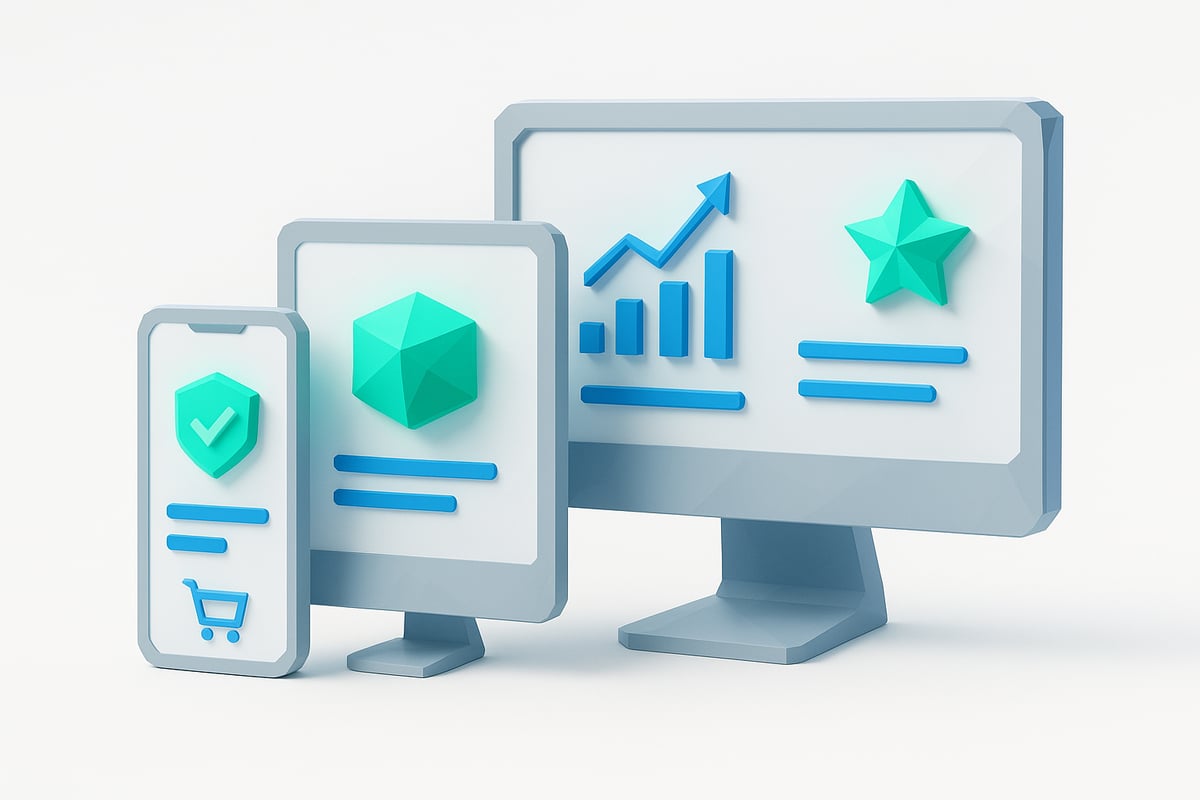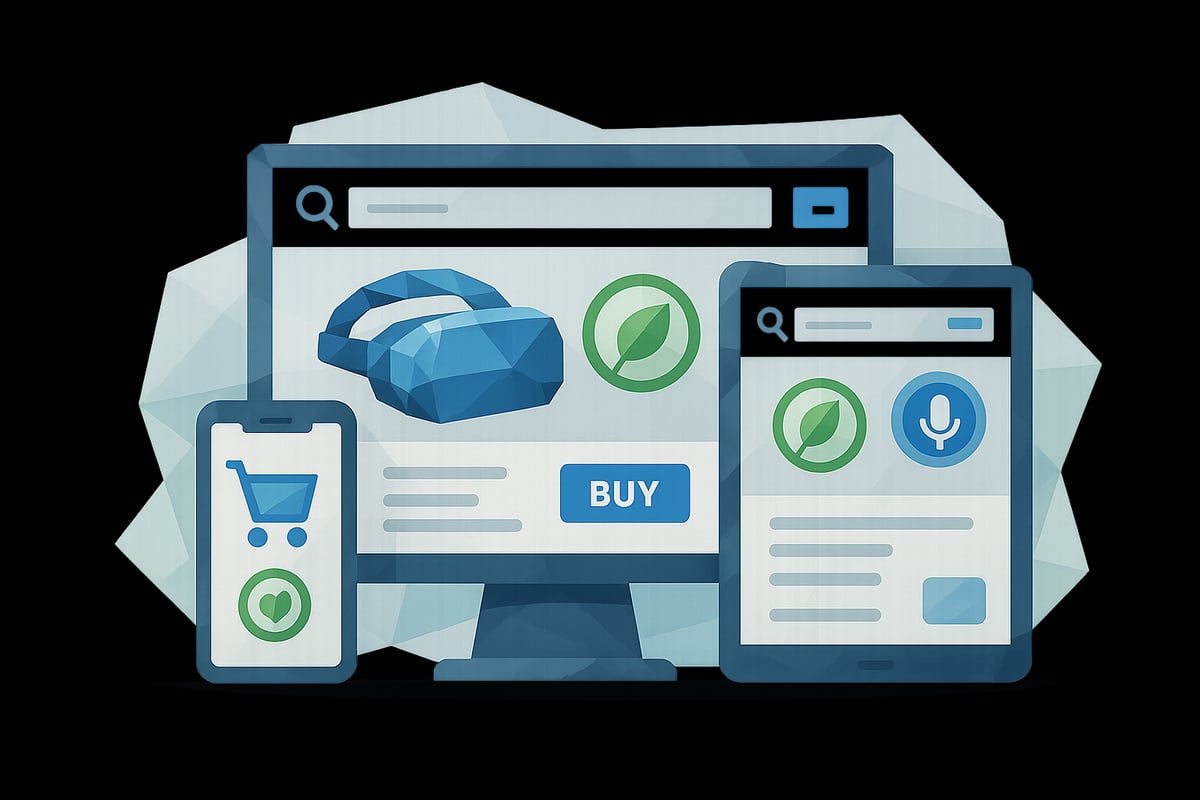Ecommerce is transforming at breakneck speed, and 2025 is set to bring even higher expectations from online shoppers. Staying ahead means your ecommerce website must evolve to outpace competitors and delight every visitor.
In this guide, we reveal the seven must-have features your ecommerce website needs in 2025 for lasting success. Expect actionable tips, the latest trends, and real-world examples to help your business thrive.
Ready to future-proof your online shop? Let’s explore the essential features that will set you up for growth and keep your customers coming back.
Why Your Ecommerce Website Needs to Evolve in 2025
The ecommerce website landscape is changing at lightning speed. Shoppers now spend more time on their phones, expect instant access to products, and demand a shopping journey that feels effortless from start to finish. With the number of online stores increasing every year, brands need to work harder than ever to stand out.
Today’s consumers want more than just a place to buy things. They crave fast, secure, and personalised experiences every time they visit an ecommerce website. If a site feels slow or outdated, customers will quickly move on. In fact, it takes only 50 milliseconds for a visitor to form a first impression about a website. That’s less time than a blink.
Let’s look at some eye-opening stats that underline why keeping your ecommerce website up to date is crucial:
| Statistic | Impact |
|---|---|
| Average loss to online fraud (SMEs, 2023) | £11,000 per business |
| Time to form first impression | 50 ms |
| Mobile share of online traffic | 60%+ |
| Cart abandonment rate | 69% (average) |
New technology is also shaping the way ecommerce websites operate. Artificial intelligence, automation, and mobile-first design are not just buzzwords but essentials for delivering what shoppers expect. AI tools can analyse customer behaviour in real time, providing recommendations and support that feel truly personal.
If an ecommerce website falls behind, the consequences can be severe:
Higher bounce rates as users leave slow or clunky sites
Lost sales due to abandoned carts or unclear information
Poor SEO performance, making it hard for new customers to find you
Leading brands like Shopify, Wix, and Allbirds are constantly evolving their online presence. They embrace new trends, invest in advanced features, and put user experience at the heart of every decision. By learning from these pioneers, any business can create an ecommerce website that not only attracts but delights customers.
Investing in the right features is no longer a luxury, it’s a necessity for growth, trust, and long-term loyalty. If you’re wondering where to start, consider exploring custom ecommerce web development strategies that are tailored to your unique needs.
The bottom line? To thrive in 2025 and beyond, your ecommerce website must evolve. The next section reveals the seven essential features that every successful online store needs now. Are you ready to future-proof your business?

7 Must-Have Features For Your Ecommerce Website In 2025
Staying ahead in ecommerce means constantly adapting. In 2025, customer expectations are higher than ever, and only those with a truly modern ecommerce website will thrive. Let’s dive into the seven essential features you need to future-proof your store, boost conversions, and delight your shoppers.

1. Advanced Mobile Responsiveness and Optimisation
Mobile shopping is the new normal. Shoppers spend over five hours daily on their phones, and your ecommerce website must shine on every screen. Responsive design ensures your store looks and works perfectly on mobiles, tablets, and desktops, whatever the size.
Google’s mobile-first indexing now prioritises mobile-optimised sites for search rankings, making it crucial for SEO. Touch-friendly menus, big buttons, and lightning-fast loading times all play a part. Brands powered by Shopify consistently deliver smooth mobile journeys, setting the bar high for others.
Testing tools like Google’s Mobile-Friendly Test help you spot and fix issues quickly. Did you know that mobile-optimised ecommerce websites see up to 64% higher conversion rates and much lower bounce rates? Mobile optimisation is not just a nice-to-have, it’s the foundation of your online success.
For extra tips on boosting your mobile site’s performance, check out this Shopify optimisation guide for practical strategies.
2. Seamless and Secure Checkout Process
A smooth checkout experience is the heartbeat of any ecommerce website. Friction at this stage leads to abandoned baskets and missed sales. Integrating multiple payment options like Apple Pay, Google Pay, Klarna, and PayPal gives shoppers flexibility and confidence.
Security is non-negotiable. Use SSL encryption, maintain PCI compliance, and display trust badges clearly. Shopify Payments, for example, offers merchants both robust security and flexibility. Best practices include guest checkout, auto-filling details, and showing a progress indicator so customers know exactly where they are.
Transparent return policies and clear shipping info remove doubts and build trust. Streamlined checkouts can cut abandonment rates by up to 35%. Make sure your ecommerce website’s checkout is secure, simple, and built for trust.
3. AI-Powered Personalisation and Smart Recommendations
Imagine an ecommerce website that knows what your customers want before they do. That’s the promise of AI-driven personalisation. By analysing browsing and purchase history, AI can suggest products, tailor offers, and even personalise the homepage for each visitor.
This results in higher average order values, a more enjoyable customer journey, and increased loyalty. Platforms like Wix and Shopify are integrating AI tools to help merchants compete with giants like Amazon, whose recommendation engine is legendary. AI chatbots can also provide instant support, making shoppers feel valued.
Personalisation isn’t limited to your website. It extends to emails, product pages, and even post-purchase follow-ups. Stats show that personalised experiences can boost sales by 10–15%. For a deeper dive, see how AI-powered personalisation in ecommerce is changing the game.
4. Robust Trust Signals and Social Proof
First impressions count, and trust is everything. Your ecommerce website needs visible trust signals to reassure new customers. These include verified customer reviews, testimonials, security badges, and clear contact details.
Follow best practices like Supergoop’s easy-to-find returns policy and responsive customer service. Social proof is powerful: displaying reviews can lift conversion rates by up to 20%. Integrate third-party review platforms such as Trustpilot or Google Reviews for added credibility.
User-generated content, like customer photos and videos, adds authenticity and builds a sense of community around your brand. When shoppers see real people enjoying your products, hesitation fades. Visible trust signals are essential for lowering barriers and driving more sales.
5. Lightning-Fast Site Speed and Performance
Speed is a game-changer. If your ecommerce website takes more than three seconds to load, most visitors will leave. Fast sites delight users and rank higher in search results, thanks to Google’s Core Web Vitals.
Optimisation techniques include compressing images, using lazy loading, and leveraging a CDN for global delivery. Platforms like Shopify and Wix offer built-in tools to help you stay speedy. There’s a direct link between site speed, lower bounce rates, and higher conversions.
Try tools like Google PageSpeed Insights or GTmetrix to monitor your performance. The faster your ecommerce website, the more likely shoppers are to stay, browse, and buy.
Here’s a quick comparison table for speed optimisation tools:
| Tool | Purpose |
|---|---|
| Google PageSpeed Insights | Performance testing |
| GTmetrix | Speed benchmarking |
| Shopify Optimiser | Store-specific fixes |
6. Advanced Search and Intuitive Navigation
Nothing frustrates shoppers more than not finding what they need. An ecommerce website with advanced search and easy navigation solves this. Features like predictive search, filters, and faceted navigation make product discovery effortless.
Follow competitor best practices: clear menu headers and focused navigation keep users on track. Brands like Allbirds and MVMT excel with powerful on-site search, helping customers find products in seconds. Effective search can lift conversion rates by up to 30%.
Accessibility matters too. Ensure your navigation works with keyboards and screen readers so everyone can enjoy your site. Advanced search and intuitive navigation make your ecommerce website a pleasure to use and boost your reputation.
7. Integrated Analytics and Real-Time Reporting
Data is your secret weapon. An ecommerce website with built-in analytics gives you the insights you need to grow. Integrate with platforms like Google Analytics 4 or Shopify Analytics to track sales, segment customers, and monitor real-time performance.
Wix and Shopify offer custom reporting tools, letting you adapt your marketing, inventory, and customer experience strategies on the fly. Data-driven businesses are 23 times more likely to win new customers. Remember to keep GDPR compliance and data privacy at the forefront.
Robust analytics empower you to make smarter decisions, respond quickly to trends, and stay ahead in 2025.
Future Trends Shaping Ecommerce Website Features
The digital landscape is moving at lightning speed, and what sets an ecommerce website apart in 2025 is how quickly it adapts to change. Staying ahead is no longer just about having a store online, it is about embracing the latest trends and creating a seamless, exciting experience for every shopper.
Emerging technologies are reshaping how we shop and interact. Artificial intelligence is powering smarter recommendations and automated support. Augmented and virtual reality let customers try before they buy, making online shopping more immersive. Voice search and headless commerce are also transforming how users find products, requiring a flexible and future-ready ecommerce website.
Sustainability has become a core expectation for shoppers. Features like carbon-neutral shipping, eco-friendly product badges, and transparent supply chains build trust and loyalty. Brands that highlight sustainability on their ecommerce website not only help the planet but also attract conscious consumers.
Social commerce and shoppable videos are blurring the line between inspiration and purchase. Integrating shopping directly into social feeds, livestreams, and video content engages users where they already spend time. Omnichannel experiences tie it all together, letting shoppers move smoothly between devices and platforms. For insights into adapting design for these trends, see Online store design strategies.
Early adopters who embrace these innovations gain a real advantage. Continuous innovation is essential to keep pace with rising customer expectations. To future-proof your ecommerce website and stay ahead, consider working with an ecommerce partner who understands both technology and consumer trends.

If you’re feeling inspired to future proof your ecommerce website after discovering these essential features for 2025, you’re not alone—we’re all navigating a rapidly changing digital landscape together. At Futur Media, we love helping UK businesses like yours turn ideas into high performing, customer friendly online shops that stand out. Whether you want to boost mobile performance, add AI driven personalisation, or just need a fresh design that converts, we’re here to support you every step of the way. Let’s work together to create something remarkable—ready to get started? Start Project

